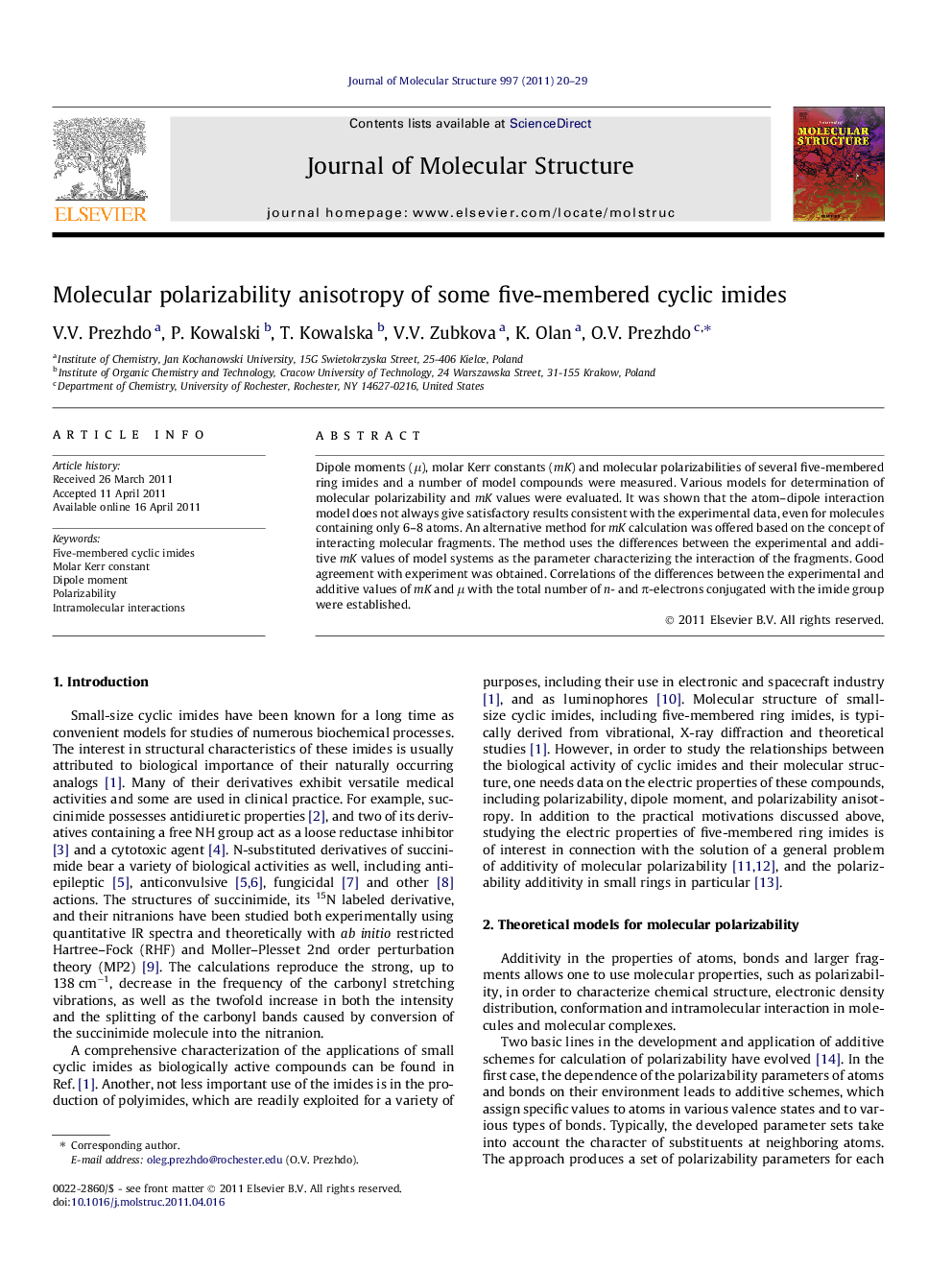| Article ID | Journal | Published Year | Pages | File Type |
|---|---|---|---|---|
| 1410488 | Journal of Molecular Structure | 2011 | 10 Pages |
Dipole moments (μ), molar Kerr constants (mK) and molecular polarizabilities of several five-membered ring imides and a number of model compounds were measured. Various models for determination of molecular polarizability and mK values were evaluated. It was shown that the atom–dipole interaction model does not always give satisfactory results consistent with the experimental data, even for molecules containing only 6–8 atoms. An alternative method for mK calculation was offered based on the concept of interacting molecular fragments. The method uses the differences between the experimental and additive mK values of model systems as the parameter characterizing the interaction of the fragments. Good agreement with experiment was obtained. Correlations of the differences between the experimental and additive values of mK and μ with the total number of n- and π-electrons conjugated with the imide group were established.
► Fragment addition model describes electric properties of cyclic imides. ► Deviations between theory and experiment characterize interactions of imide group with other fragments. ► The deviations correlate with the number of n- and π-electrons conjugated with imide group. ► Quantum-chemical calculations provide reasonable values for electric properties. ► Inclusion of solvent effect in quantum-chemical calculations may be required.
